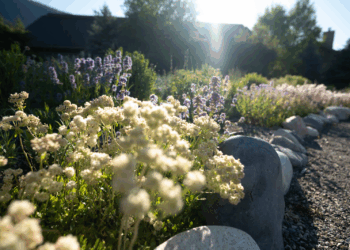By Paul Zaenger Writers on the Range

“While other children were sent to daycare, when I was 3 years old I was sent to a Japanese-American prison,” Carlene Tanigoshi Tinker, now 82, told the Washington Post recently.
She was one of some 120,000 Americans of Japanese ancestry who were forcibly imprisoned during World War II, a time when racist fears swept the country.
After traveling in a railroad car from the West Coast, Tanigoshi and her family arrived at a prison camp close to Kansas that became known as Amache. The military-style barracks were laid out on a barren landscape in lightly populated eastern Colorado. It was one of 10 such prisons hastily erected in America during the 1940s.
Now, thanks to a bill that passed the House and is now before the Senate, there’s a good chance that Amache will become a new national historical park, telling its story of mass hysteria, hardship and survival.
Tanigoshi, who I met at Amache recently, said that the people imprisoned were patriotic Americans, and after men in the local town of Granada joined the military and labor became scarce, camp prisoners filled in at harvest time, mostly as volunteers. The need to harvest the main crop of sugar beets set the stage for camp residents and locals to trust each other.
Once Amache Director James Lindley got to know the incarcerated families, he began to relax restrictions, opening the door for a new community to form. Teachers were allowed to move into the camp to be closer to their students. He also allowed internees to work at other jobs in Granada, one mile away, and permitted camp residents to go to town for social activities such as seeing a movie or going to a soda fountain. According to reports told of the camp, Amache was humanely run, the place internees in other camps wanted to transfer into.
Living conditions, however, were grim for the approximately 7,000 people who were never allowed to protest their incarceration. Still, 441 men from the camp served in our military during World War II.
When the camp was closed after three years, its origin story was mostly neglected. But in 1993, Granada High School teacher John Hopper asked his students if they’d like to do some volunteer work, helping to restore the camp’s water tower and signs and any structures that remained standing. The students were enthusiastic, he said in an interview, and so began the Amache Preservation Society that continues to maintain the site today, along with other volunteer groups.
“Generations of kids and their parents have worked to keep Amache’s history alive,” said Hopper, who is now school principal. “Students travel all over, including Japan, to tell the story of how the camp came to be and what it was like.”
Another frequent visitor is Bonnie Clark, archaeologist at Denver University. Since 2008, she and her team, some descendants of internees, have been researching life at the camp.
When I visited the camp and its museum, one of her team, Greg Kitajima, showed me butterflies made from tiny seashells that his mother made when she was an internee. The layered shells give shape to the insect forms; the pastel stripes of the shells add delicate color to the shapes. Greg also tells me stories he heard from his grandparents, strawberry farmers in San Jose, California, who suffered severe discrimination as war fever swept through America. They, too, were sent to Amache. His eyes well up as he shares the memories. It is painful to hear. My eyes tear up, too.
I believe that the move by four Colorado Congressmen to designate Amache a national historic site is one that can bring us together. This place of deprivation, yet community, needs to be preserved.
Late in the day, when I’m walking around the camp’s recreation hall, bunkhouse and a guard tower, the setting sun mellows the landscape. I think about what Greg told me, about how his family feels linked to this place. They were people who made the best of a bad situation – the best they could.
Amache’s power is that it invites us to listen and learn from the past, to renew our sense of humanity. Perhaps Amache can help to heal our nation’s troubled soul.
Paul Zaenger is a contributor to Writers on the Range, writersontherange.org, a nonprofit dedicated to spurring lively conversation about the West. He was a supervisory park ranger who recently retired after 40 years in the National Park Service.














